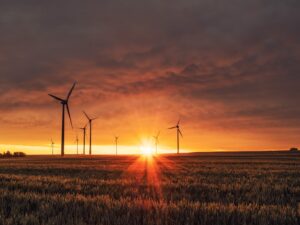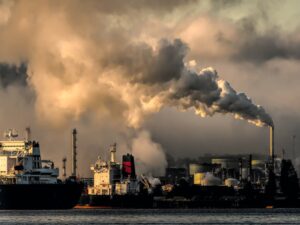The visionary economist’s ideas have radical implications
You wouldn’t know it, but one of the most visionary thinkers of the twenty-first century, Herman Daly, died recently. Daly was the father of steady-state economics (SSE). But while all things sustainability have increased in popularity, this undoubted heavyweight in the sustainability field and his ideas, have not. Steady-state economics may well come to form the foundations of post-growth economies in years to come, but countries are hardly forming an orderly queue seeking to embrace an SSE. To understand why we need to understand what steady-state economics is.
In Beyond Growth, Daly argues sustainable development “means a radical shift from a growth economy and all it entails to a steady-state economy.” As disciples of Daly put it in Enough is Enough, a steady-state economy is an economy:
“That aims to maintain a stable level of resource consumption and a stable population. It’s an economy in which material and energy use are kept within ecological limits, and in which the goal of increasing GDP is replaced by the goal of improving quality of life.”
Enough is enough: Building a sustainable economy in a world of finite resources, p. 45
Growth isn’t just desirable in a capitalist economy; it is essential to the health of society. So much so that (as we’re currently experiencing) a failure to achieve growth leads to crisis. Recession sets in, living standards reduce and unemployment increases. The issue with growth being interwoven with the health of the economy is that achieving further growth requires never-ending increases in production and consumption. There can never be ‘enough’ — which is problematic on a finite planet with finite resources.
The economy has become so large that we are now in a state of ecological overshoot. Overshoot is where our demands on the natural world exceed its regenerative capacity. And it’s not as if we’ve overshot by a little bit; we’d need 1.7 Earths to make our consumption levels sustainable. Growth and increasing environmental impacts go hand in hand, so more growth translates into more emissions, more waste, more habitat destruction, and ultimately increasing overshoot. In other words, if economic growth can’t be sustained, it is an unsustainable economic goal.
An SSE is radically different because the throughput of energy and materials remains constant. The overall goal of a steady-state economy is to “reduce material throughput and increase efficiency.” The idea is that, just like the Earth system, a dynamic equilibrium is maintained. The Earth isn’t static and unchanging but maintains an energy balance that can continue indefinitely if an outside force doesn’t influence the processes that maintain stable environmental conditions.
To achieve a steady-state, the throughput of energy and materials “must be ecologically sustainable for a long future for a population living at a standard or per capita resource use that is sufficient for a good life.” To stay within ecological limits, Daly proposes three foundational principles that must guide decision-making.
1. Renewable resources should be harvested at rates that do not exceed regeneration rates.
2. The rate of depletion of non-renewable resources should not exceed the rate of creation of renewable substitutes.
3. Waste emissions rates should not exceed the natural assimilative capacities of ecosystems into which they are emitted.
If followed, Daly suggests the guidelines will ensure that humanity produces all the goods and services needed to fulfil each person’s needs within environmental limits.
Daly argues that “ecological sustainability of the throughput is not guaranteed by market forces.” Markets create ‘Pareto optimal’ outcomes — meaning free markets allocate available resources so that no reallocation could make consumers better off in their own eyes without making at least one other consumer worse off in his/her eyes. But the issue with how free markets allocate resources is that such an allocation can be made at any scale, including (as we’re experiencing) one that drives us away from ecological limits and into a state of overshoot.
That market forces can’t guarantee the principles of a steady-state will be upheld, suggests the state, or some other democratically elected body, would play a far more active role in an SSE to ensure the three guiding principles are maintained.
Success in an SSE would not be based on maximising profits and increasing GDP but rather on maximising human well-being. Doing so would reduce the ever-increasing dependence on the natural world that has come to define free-market capitalism, not to mention create a social goal that actually focuses on our well-being, rather than assuming a growing economy leads to increasing incomes which must be making everyone better off. Changing how we measure success would reduce the need for increasing domination of habitats, allowing biodiversity to recover.
Economic growth would continue to serve a purpose in a steady-state. Developing nations still need to pursue policies encouraging economic growth to end poverty. But the benefits of economic growth can only be realised if there is a fairer distribution of wealth and resources. This could be achieved by establishing limits to the range of permissible inequality and introducing a minimum and maximum income.
As we are already in a state of ecological overshoot, developing nations can only develop sustainably if developed nations decrease consumption levels. This will free up resources and ecological space for development without increasing overshoot.
Free trade wouldn’t be possible in a world with both sustainable and unsustainable economies because sustainable economies “would necessarily count many costs to the environment and future that would be ignored in the growth economies.” The unsustainable economies could underprice their rivals simply because any associated environmental costs would be detached from prices, making them far more competitive against their sustainable counterparts.
Underlying its rather benign name, steady-state economics has radical connotations because moving towards an SSE would involve nothing short of a total redesign of society around a very different ideology. Doing so would create a profound shift in human behaviour and the values, norms and conventions that define our lives. No wonder then why no government has embraced this economic model.
It’s unrealistic to imagine we can spontaneously shift from one economic system to another when every layer of society is influenced by and in service of the economy. So, while Daly does not advocate for revolution, such is the scale of change required that it’s implicitly implied. In the coming decades, weather extremes will start to wreak havoc on our ability to provide the goods and services needed to provide for people’s needs. As they do, dramatic decreases in living standards driven by economic and inflationary shocks will create a melting pot of discontent and unrest. The kind of conditions that will see post-growth economies gain far more popularity as the need to move beyond growth becomes ever more compelling. In the midst of it all, Daly may well gain the widespread acclaim and reverence his ideas deserve.



